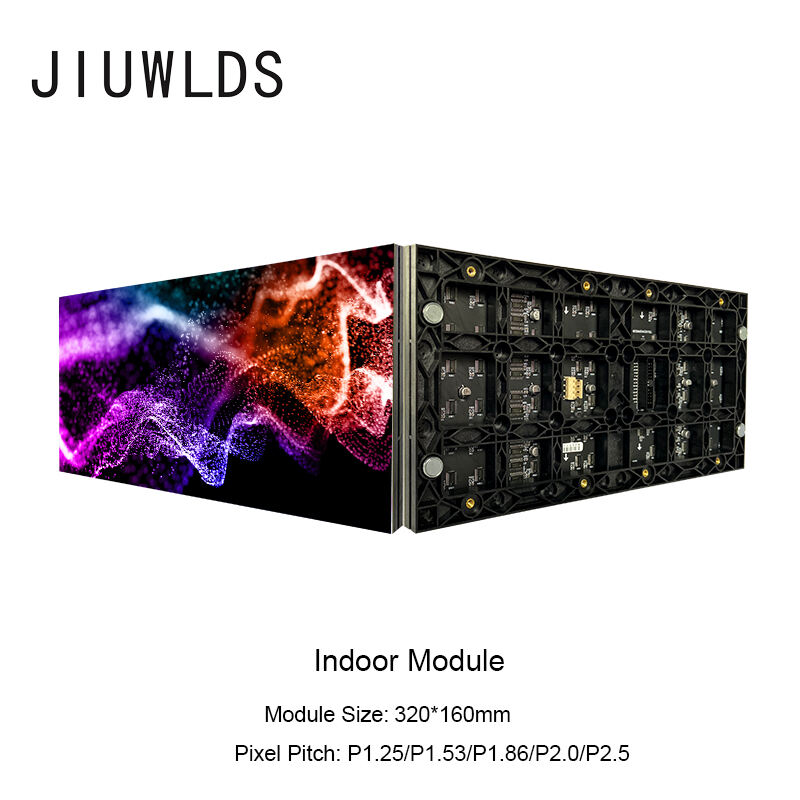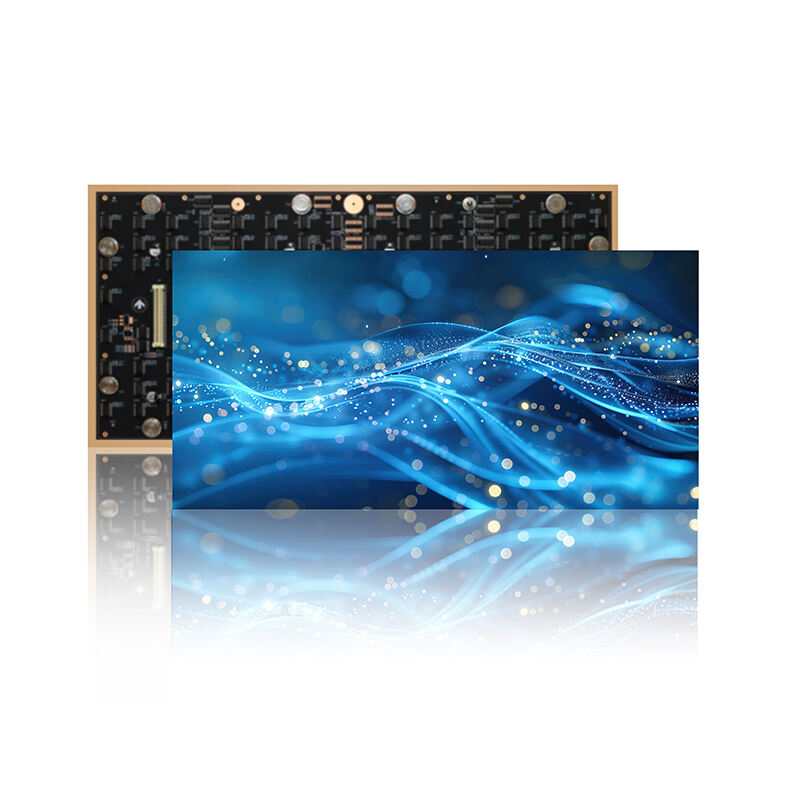Indoor Poster Displays: Engaging Audiences with Eye-Catching Content
The Evolution of Indoor Poster Displays in Modern Advertising
From Static Prints to Dynamic LED Display Screens
The world of advertising has witnessed a revolutionary shift from static prints to dynamic LED display screens. Traditionally, print advertising was limited by its inability to engage interactively or provide real-time updates, often resulting in stale and less impactful marketing. The introduction of LED technology has transformed this landscape, offering unprecedented advantages such as energy efficiency and vibrant displays that capture consumer attention more effectively. The shift is backed by compelling data, like reports indicating a 23% increase in the market share of LED displays over the past five years. This transition underscores the need for advertisers to embrace innovative solutions to keep pace with evolving consumer expectations.
How Indoor LED Display Screens Revolutionized Brand Engagement
Indoor LED display screens have had a profound impact on brand engagement by revolutionizing how consumers interact with advertising content. These screens draw attention with their vivid imagery, increasing dwell time as supported by studies, which show enhanced consumer engagement. Brands now capitalize on personalized content delivery and audience analytics to tailor messages effectively, thereby boosting visibility and interaction. Successful cases like Audi, who utilized indoor LED displays at Waterloo Station to mix dynamic statistics with brand features, showcase how brands create immersive experiences that engage customers. This method of advertising not only ensures higher visibility but fosters meaningful connections with audiences, driving brand loyalty and growth.
Design Strategies for Eye-Catching Indoor Advertising LED Displays
Color Psychology in Visual Messaging
Understanding color psychology is integral to crafting compelling visual messages that resonate with consumers. Specific colors can profoundly influence emotions and drive consumer behavior. For instance, red often evokes energy and urgency, making it ideal for time-sensitive promotions, while blue can convey trust and reliability, perfect for financial services. In LED advertisements, brands strategically use these colors to enhance recall and prompt action. One example is Coca-Cola's use of red to signify excitement and refreshment, driving customer attraction at events. Studies reveal that advertisements featuring harmonious color schemes significantly improve consumer engagement, with a 36% increase in visual recall reported by the Color Research Institute. By selecting colors that align with the advertising message, brands can leverage LED displays to create captivating and memorable experiences.
Curved and Flexible LED Screen Configurations
The innovative use of curved LED screens is transforming advertising by offering immersive environments that captivate audiences. These screens provide a wrap-around effect that enhances viewer engagement, particularly in retail and event settings. An excellent example is Samsung's multi-dimensional LED installations, which draw visitors by merging technology with artistic experience in flagship stores. Furthermore, flexible LED displays allow advertisers to explore unconventional forms and layouts, adapting to diverse architectural features and creating more dynamic interactions. When integrating these displays into advertising strategies, best practices include ensuring optimal brightness and resolution settings to match ambient conditions and capitalizing on spatial design to lead the viewer's eye toward key messaging points. Ultimately, curved and flexible LED configurations open new dimensions for creativity, enabling brands to craft visually engaging and memorable advertising experiences.
Technological Advancements in Indoor Rental LED Displays
High-Definition Resolution for Immersive Experiences
The evolution of high-definition technology has significantly impacted indoor rental LED displays, offering outstanding clarity and immersive visual experiences. A key factor is the pixel pitch, which refers to the distance between two LED beads. The smaller the pixel pitch, the sharper and clearer the display, which is crucial for presenting detailed images at close viewing distances. With the consumer demand for ultra-high-definition (UHD) experiences skyrocketing, these displays are becoming essential in event marketing. Experts suggest that the meticulous design of high-definition displays enhances viewer engagement and brand message retention, signifying their importance in today's advertising landscape.
Modular Designs for Rapid Installation
Modular design is a game-changer for indoor rental LED displays, prioritizing ease of transport and rapid assembly. These designs consist of individual LED panels that can be quickly snapped together to form a seamless screen, greatly reducing installation and dismantling times. For instance, events like trade shows and conventions often benefit from this quick setup, enabling a flexible and efficient deployment without sacrificing display quality. According to industry statistics, modular designs can cut installation times by up to 50%, making them invaluable for time-sensitive projects and dynamic environments.
Applications of LED Display Screens for Advertising Indoor Spaces
Retail Environments: Driving Foot Traffic
In the bustling realm of retail, vibrant indoor advertising LED display screens play a pivotal role in attracting foot traffic and boosting sales. Studies reveal that stores equipped with dynamic digital displays can increase foot traffic by up to 24% and sales by up to 29%. By effectively integrating these displays into retail environments, stores can create an immersive shopping experience that enhances customer engagement. Techniques such as strategically placing displays near entrances or within window displays can captivate potential customers in high-traffic areas. Prominent examples include instances where retailers like Adidas have used interactive indoor LED displays to showcase live social media feeds and personalized customer messages, reflecting significant uptake in retail strategies.
Event Venues: Creating Interactive Backdrops
LED displays have revolutionized event venues by transforming standard settings into captivating interactive backdrops. These indoor LED screens are often employed as dynamic backgrounds for presentations, live performances, and exhibitions, significantly enhancing the ambiance and viewer experience. Innovations in interactive capabilities, such as real-time social media feeds and audience polls, engage attendees and create a more interactive event experience. For instance, notable events like music festivals and trade shows have leveraged LED screens for stunning visual presentations, thus setting a new precedent in event entertainment. This technological advancement allows event organizers to create memorable experiences that resonate with audiences long after the event concludes.
Corporate Hubs: Enhancing Internal Communications
In corporate hubs, LED displays serve as powerful tools for enhancing internal communications and fostering employee engagement. Organizations leverage these displays for dynamic content delivery, such as real-time corporate updates, motivational messages, and team achievements, thereby cultivating a strong sense of community and connection among employees. Through personal experiences, I’ve witnessed companies effectively using LED screens in lobbies and meeting spaces to promote corporate branding and facilitate seamless communication. This strategic use of displays not only underscores the organization's values but also encourages interaction, potentially boosting employee morale and collaboration. As digital communication becomes increasingly integral to work environments, harnessing the power of LED technology can lead to more effective and efficient internal communication strategies.
Future Trends in Indoor Advertising LED Display Technology
Integration with IoT for Smart Content Management
Integrating IoT devices with LED displays is an emerging trend poised to revolutionize smart content management in indoor advertising. With IoT, content can become highly personalized and timely, responding to the audience's preferences or location in real-time. This integration enhances operational efficiency, allowing businesses to target and engage viewers more effectively. For instance, some companies have already started employing IoT-driven LED displays to optimize their advertising strategies, leading to measurable improvements in customer engagement and conversion rates. Reports show that brands leveraging IoT in their advertising have experienced up to a 15% increase in performance metrics, demonstrating the potential of this technology in indoor advertising environments.
Sustainable Materials in LED Poster Production
As consumer demand for sustainability grows, the advertising industry is increasingly focusing on eco-friendly materials in LED displays. Innovations in LED poster production now include advancements in recycling LED components and using sustainable materials to minimize waste. The push toward sustainability is not only environmentally beneficial but is also financially rewarding in the long run; companies adopting these practices are witnessing enhanced brand reputation leading to increased consumer loyalty. Statistics indicate that nearly 70% of consumers prefer brands that invest in eco-friendly advertising solutions, highlighting the long-term benefits of sustainable practices. These advancements in LED display technology demonstrate a clear pathway toward reducing the ecological footprint of advertising while maintaining cost-effectiveness.







 Hot News
Hot News